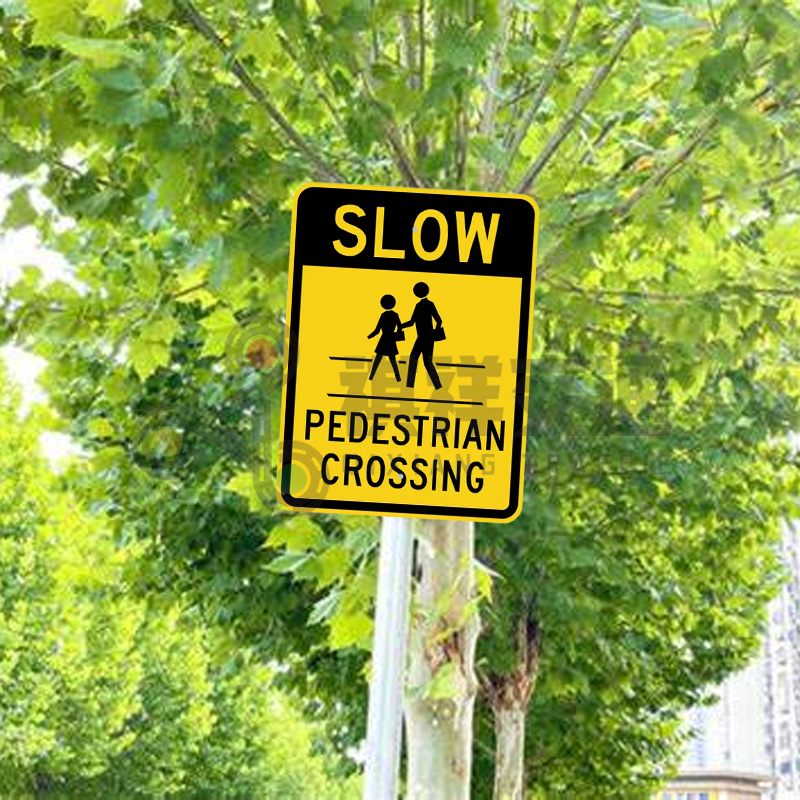In urban environments, where the hustle and bustle of daily life often intersects with safety needs, crosswalk signs play a vital role. These signs are more than just regulatory tools; they are an important part of a comprehensive traffic management system designed to protect pedestrians and enhance road safety. This article explores the various benefits of crosswalk signs and their importance in promoting safe interactions between vehicles and pedestrians.
Learn about crosswalk signs
Pedestrian crossing signs are visual indicators placed at designated crossing points to alert drivers to the presence of pedestrians. They come in many forms, including standard signs, illuminated signs, and even advanced systems that use technology to increase visibility. Common types include the familiar “pedestrian crossing” sign (which often features a sign for walkers) and “yield to pedestrians” signs (which instruct drivers to give way to people crossing the street).
Enhance pedestrian safety
One of the main benefits of crosswalk signs is their ability to enhance pedestrian safety. By clearly marking intersections, these signs help reduce the likelihood of an accident. When drivers see crosswalk signs, the system reminds them to slow down and stay alert, which can significantly reduce the likelihood of a collision. Research shows that areas with visible crosswalk signs have fewer accidents than areas without such signs.
Increase driver awareness
Crosswalk signs constantly alert drivers to the presence of pedestrians. In busy urban areas where distractions are many, these signs help keep pedestrian safety top of mind for drivers. The visual cues provided by these signs can lead to more cautious driving behavior because they prompt drivers to be more aware of their surroundings. This increased awareness is especially important in high-traffic areas, such as near schools, parks and shopping malls.
Encourage walking and active transportation
The presence of crosswalk signs can also encourage more people to walk or use other forms of active transportation. When people feel safe crossing the street, they are more likely to walk rather than drive, which can bring many benefits to individuals and communities. Increased walking helps improve public health, reduce traffic congestion and lower carbon emissions. By making crosswalks safer and more accessible, cities can promote a culture of walking and active transportation.
Support urban planning and development
Incorporating crosswalk signs into urban planning and development is critical to creating walkable communities. As cities grow, the need for safe pedestrian infrastructure becomes increasingly important. Well-placed intersection signs can guide city planners in designing roads that prioritize pedestrian safety. This can promote the development of a pedestrian-friendly environment that encourages social interaction, economic activity and a higher quality of life for residents.
Reduce traffic congestion
Crosswalk signs can also help reduce traffic congestion. When pedestrians feel safe crossing the street, they are less likely to jaywalk or take risks that could lead to an accident. This helps keep traffic moving more smoothly as drivers are less likely to encounter sudden stops or unexpected obstacles. Additionally, by encouraging walking, crosswalk signs can reduce the number of vehicles on the road, further easing congestion.
Legal and regulatory compliance
From a legal perspective, crosswalk signs are often required by traffic regulations and laws. Complying with these regulations not only helps ensure pedestrian safety but also protects municipalities and organizations from potential liability. By installing and maintaining appropriate signage, cities can demonstrate their commitment to public safety and adhere to legal standards, which is critical in the event of an accident.
Technological advances in crosswalk signs
Recent technological advances have further improved the effectiveness of crosswalk signs. Innovative technologies such as LED lights, motion sensors and smart traffic lights can significantly improve visibility and responsiveness. For example, illuminated signs that activate when pedestrians are present can draw attention to an intersection, especially in low-light conditions. These technological improvements not only improve safety but also provide a modern approach to traffic management.
Community engagement and education
Installing pedestrian crossing signs can also serve as an opportunity for community engagement and education. Local governments can use these signs to increase pedestrian safety awareness and encourage responsible behavior by drivers and pedestrians. Educational campaigns accompanying the installation of the new signage help emphasize the importance of obeying traffic rules and respecting the rights of pedestrians.
In conclusion
In conclusion, crosswalk signs are an important tool to enhance safety, raise awareness and encourage active transportation in urban environments. Their benefits go beyond just complying with traffic laws; they contribute to the overall well-being of the community by promoting safer interactions between pedestrians and vehicles. As cities continue to grow and develop, the importance of crosswalk signs will only increase, making them an essential component of effective urban planning and traffic management. By strategically placing and maintaining these signs to prioritize pedestrian safety, communities can create safer, more walkable environments that benefit everyone.
Post time: Nov-12-2024







